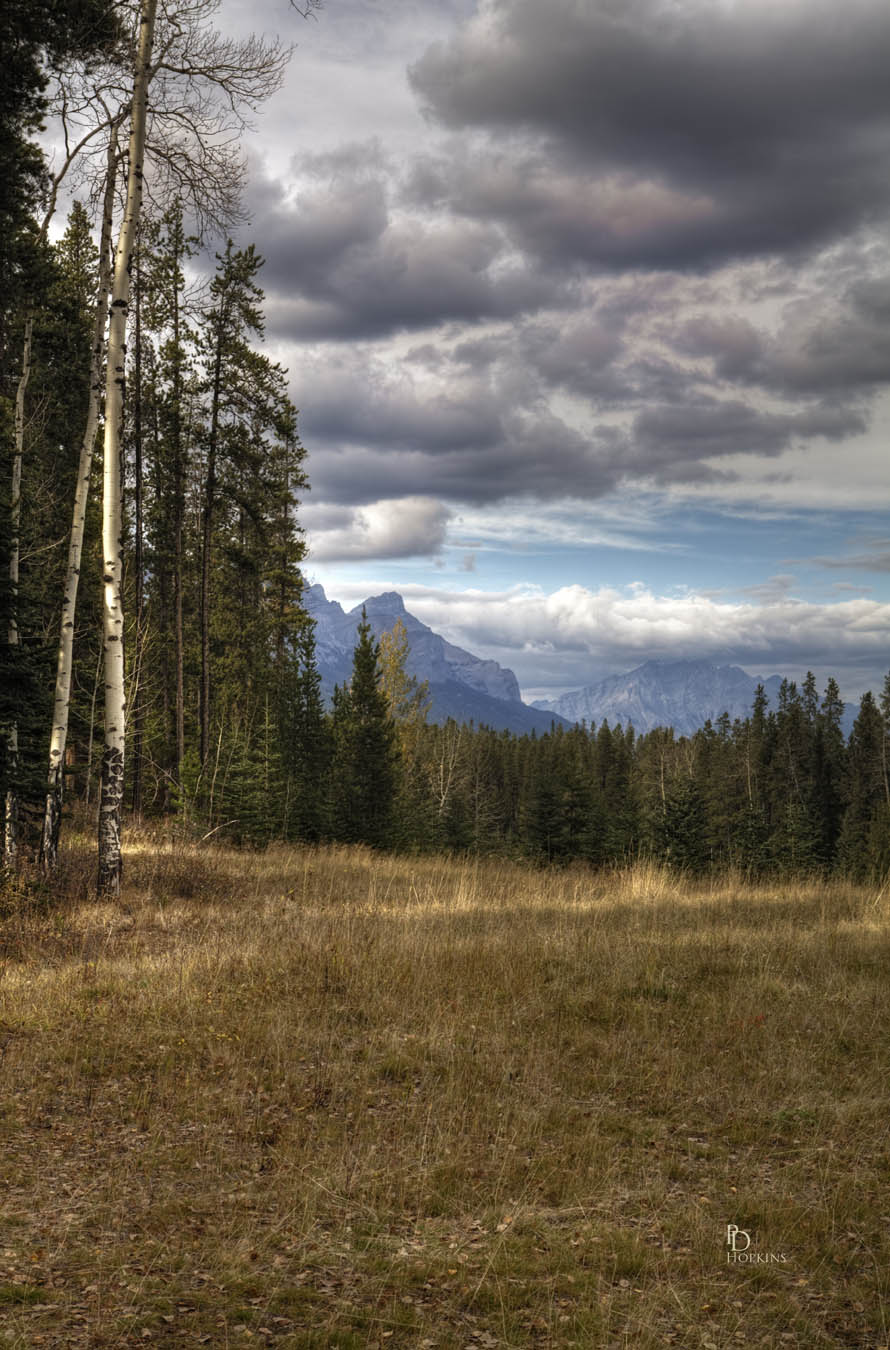No, it’s not autumn here yet! I am thinking about it though. I ran across a photo I had taken last October but had pretty much ignored to this point. I actually have three exposures of this same scene, so I chose to combine them into a high dynamic range picture. Here’s the result.

This picture was taken at the Stewart Creek Golf Course in Canmore on a pleasant October afternoon. I had a camera with me and between swings at the golf ball, I was able to take a few pictures. This view is down the Bow Valley toward Banff to the west. You can see a bit of the Rundle Range on the left and Cascade Mountain in the background. Two icons of the Town of Banff landscape.
I used three different exposures of the same scene; one with no exposure compensation, one with a negative bias of 1-1/3 f-stops and a third with a positive bias of 2/3 f-stops. I blended them together using Photomatix Pro, a program built expressly for that purpose. Using three images covering a wide range of exposures, the resultant picture has a much wider range of luminosity than a single photograph and looks more like what the human eye would actually see. No dark shadows and no areas of over exposure. Some viewers would say that HDR images look more like a painting than a photograph. Not all that surprising, since an artist would paint what his eye sees. The human eye is much more adaptive than a camera and is able to better balance the highlights and shadows when looking at a scene like this.
Software to prepare HDR images has improved a whole lot in the time I have been doing them and some of the earlier drawbacks (such as the “grunge” look) can now be avoided. There is a lot of capability in today’s software to customize these pictures and create some truly unique pictures. For the serious artist, there is scope to produce some very interesting forms of expression. For the photographer, there is the opportunity to move past the limitations of the camera and its lens.
